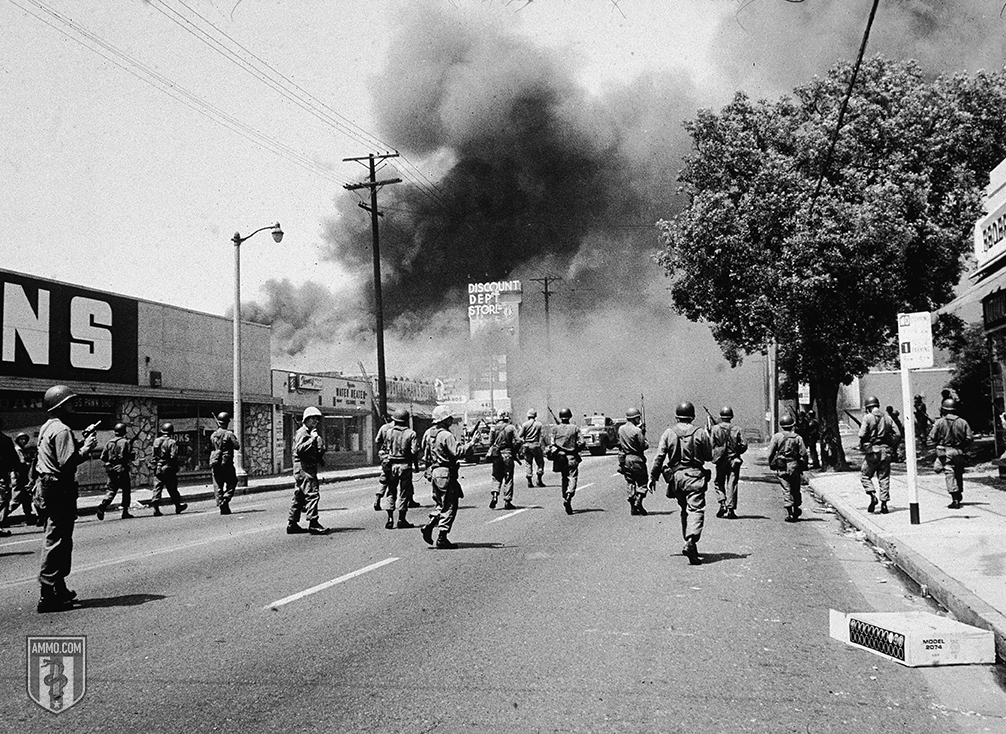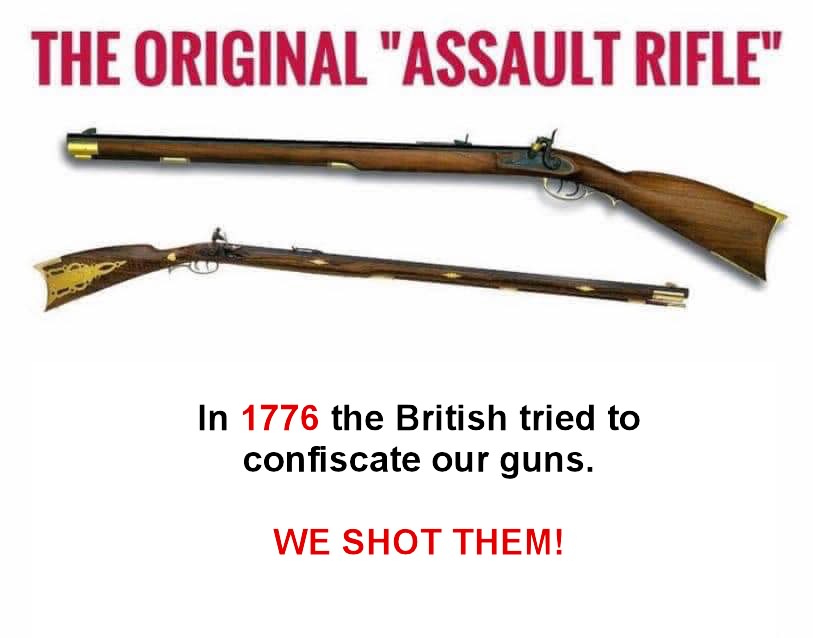
The claim often heard from those attempting to pass more gun control legislation is that all they’re trying to do is get the “weapons of war off our streets,” but it’s simply untrue that “weapons of war” are available to the general public. You’d last about three minutes in a conventional battle against the advanced weapons of the police today. The truth is that, increasingly, the only people with real “weapons of war” on America’s streets are the police.
Thanks primarily to the Pentagon’s 1033 program which allows law enforcement agencies to get their hands on Department of Defense technology and the Bush-era War on Terror, American police have received a startling amount of heavy-duty, military-grade hardware. Between 1998 and 2014, the dollar value of military hardware sent to police departments skyrocketed from $9.4 million to $796.8 million.
And just as when “all you’ve got is a hammer, then everything looks like a nail”, militarized police have become more willing to use their new weapons when carrying out law enforcement tasks. For example, the number of SWAT raids in the United States grew dramatically from about 3,000 in 1980, to a whopping 50,000 SWAT raids in 2014, according to The New Jim Crow by Michelle Alexander.
To say that the militarization of the police is nothing new is to ignore America’s recent history as well as the long-standing model of a peace officer. As the police have militarized and the Pentagon backs major players in Hollywood, the focus has shifted from one who keeps the peace to one who enforces the law – and that’s an important difference.
What Is the Difference Between a Law Enforcement Officer and a Peace Officer?

The model for police, and the constables and sheriffs before them prior to the late 20th Century, was that of a peace officer. In many states, it’s not even true that police are law enforcement officers – even though it’s a term frequently used by the police and their fans.
It’s a subtle, but important, distinction: Is the role of the police to enforce the law or to keep the peace? Consider the difference between the police force of a typical American city and the fictional Andy Taylor of The Andy Griffith Show. The former is concerned primarily with enforcing the law for its own sake and catching as many “lawbreakers” as possible. The latter, on the other hand, is primarily concerned with keeping the peace.
Peace officers might have the need for a sidearm and a shotgun, but they have little or no need for, say, a tank, to say nothing of the variety of nasty DARPA weapons police departments are increasingly wanting and getting.
The Origins of Militarized Police

Armed National Guardsmen march in Los Angeles, California, August 1965.
Before we begin talking about the militarized American police, it’s worth mentioning that United States law specifically prohibits the military from enforcing the laws in the U.S. That’s why we don’t have the Army enforcing the law, and also why we don’t have a military-style gendarmerie as is common in Europe. This law, the Posse Comitatus Act of 1878, was passed after the removal of federal troops from the Southern states following the end of Reconstruction. With rare exception, the federal government is not allowed to use the Army or the Air Force to enforce the law and the Navy has strict regulations for both the Navy and Marine Corps regarding the use of either for domestic law enforcement.
However, this law has been somewhat undermined due to police forces becoming so much like the military, which began during Prohibition in the 1920s. The equation that speaks volumes is that more police equates to more crime. The larger the police force, the bigger and more numerous the jails.
Overall crime increased by 24 percent during the first two years of Prohibition. This included a nine-percent increase in theft and burglary, a 13-percent increase in homicides, and a 13-percent increase in assault and battery. Overall, police department costs increased by 11.4 percent. However, because the police were busy fighting the scourge of demon alcohol, it was difficult for them to target crimes unrelated to this. In fact, a study of South Carolina counties that enforced Prohibition versus those who didn’t found a whopping 30- to 60-percent increase in homicides in the counties who enforced the law. All of this is according to Charles Hanson Towne in The Rise and Fall of Prohibition: The Human Side of What the Eighteenth Amendment Has Done to the United States.
This era of militarization drew to a close with the end of Prohibition itself. However, the militarization of police would resume again a few decades down the line.
DARPA: Police Militarization
 Since there is a clearly established pipeline running from the Pentagon’s latest and greatest toys, it’s not much of a stretch to say that the weapons being developed by the Pentagon today are going to be used on the streets of America in the very near future.
Since there is a clearly established pipeline running from the Pentagon’s latest and greatest toys, it’s not much of a stretch to say that the weapons being developed by the Pentagon today are going to be used on the streets of America in the very near future.
In fact, there’s an entire department of the Pentagon dedicated to developing futuristic weapons to help the United States win the new arms. It’s called the Defense Advanced Research Projects Agency, commonly known as DARPA. This agency has not only developed weapons, but also a number of contemporary technologies most people take for granted – such as GPS, graphic user interface, the mouse, and even the internet itself. Recent research includes more intuitive prosthetic limbs as well as brain implants that will help those with memory loss regain their memory.
But DARPA isn’t just working on projects like these with the promise to revolutionize medicine and increase the quality of human life. They also work on some rather nasty little projects that will almost certainly trickle down to your local police department through the 1033 program. Some of the futuristic weapons currently in development by DARPA include:
- Active Denial System: The active denial system is an invisible ray gun heating the skin of people in a given area to 130 degrees. The targets instinctively flee, something that DARPA calls the “goodbye effect.” The end result can leave second- or third-degree burns on up to 20 percent of the body’s surface. The weapon has already been tested in Afghanistan.
- Taser X12: Nearly everyone is familiar with the Taser. The Taser X12 is effectively that in 12-gauge shotgun form. This extends the reach of a Taser weapon from about 20 feet to about 100 feet.
- Skull Piercing Microwaves: Yep, you read that right. One of the projects DARPA is working on right now leverages the audio effect of microwaves. This creates shockwaves inside the skull, which are read by the brain as sound. This can result in discomfort, incapacitation and brain damage.
- Long-Range Acoustic Device: Sirens might not sound like a big deal, but the current ones being worked on by DARPA are so loud they can cause permanent hearing damage very quickly. Pittsburgh police already used this against protestors in 2009. More advanced sonic weapons can be deadly, including the Thunder Generator developed by the Israelis
- Voice of God: This one sounds impossible, but it’s not. The Voice of God is pretty much exactly what it sounds like. It’s a weapon beaming words directly into your head so that you think God is talking to you. This leverages the same technology in LRADs, but for different effect.
These are just a few of the weapons that we know about. There is almost certainly far more frightening classified weapons coming down the pike over the next decade.
The tendency is strongly in the direction of increasingly militarized police. This renders the notion of “weapons of war on our streets” as a gun grabber argument exceptionally weak. The most heavily armed gang on the street isn’t your local street gang – it’s law enforcement. They have weapons far in excess to that of the average citizen or even the average criminal. This means resisting them can easily be deadly, even when you’re within your legal rights.
This raises a point worthy of consideration: The usual suspects will cry and rage at your ability to legally own an AR-15, a right codified by the United States Constitution. Rare is the gun grabber who makes any kind of stink when police use directed energy weapons. Remember that gun grabbers aren’t against guns – they’re just against yours.

